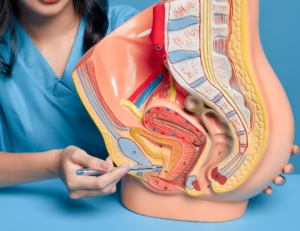August is National Breastfeeding Month, a time to celebrate the incredible benefits of breastfeeding for both babies and mothers. Breastfeeding is a natural process, but it can come with its challenges. Whether you’re a new mom or expecting soon, understanding the basics of breastfeeding can help you feel more prepared and confident.
The Basics of Breastfeeding
Breastfeeding is the recommended method of feeding newborns and infants as it provides all the necessary nutrients in the proper proportions. It protects against diseases, promotes sensory and cognitive development, and strengthens the bond between mother and child.
The best time to start breastfeeding is within the first hour of birth. Skin-to-skin contact can help stimulate suckling instincts in newborns.
Proper positioning and latch are crucial for effective breastfeeding. The baby’s mouth should cover not just the nipple but as much of the areola as possible.
Understanding the Latch
What is a Good Latch?
A good latch occurs when your baby’s mouth covers a large portion of the areola (the dark skin surrounding the nipple), not just the nipple itself. This allows your baby to efficiently extract milk and helps avoid nipple pain or damage.
Tips for Achieving a Good Latch
- Prepare for the Feed:
- Find a comfortable and supportive position. Use pillows to support your arms and baby’s weight if necessary.
- Make sure your baby is fully awake and showing signs of hunger, such as rooting or sucking motions.
- Position Your Baby Correctly:
- Hold your baby close to you, chest to chest. The baby’s body should be aligned with yours, ensuring that they don’t have to turn their head to latch.
- Support your baby’s head and neck with one hand, allowing their head to tilt back slightly. This positioning helps them open their mouth wide.
- Encourage Your Baby to Open Wide:
- Before latching, tickle your baby’s lips with your nipple to encourage them to open their mouth wide.
- As your baby opens their mouth wide, pull them close so that they take a large portion of the areola into their mouth.
- Check the Latch:
- A well-latched baby will have their chin and nose touching your breast, with more of the areola visible above their mouth than below.
- Listen for the sound of swallowing, and watch for rhythmic jaw movements. If you hear clicking noises or if nursing is painful beyond a mild initial discomfort, reposition your baby.
- Use Supportive Techniques if Necessary:
- If you have flat or inverted nipples, techniques like breast shaping (compressing the breast tissue to form the shape of a hamburger) can help your baby latch.
- For engorged breasts, expressing a little milk before feeding can soften the areola, making it easier for your baby to latch.
- Be Patient and Keep Practicing:
- It can take time for both you and your baby to get comfortable with breastfeeding. Don’t hesitate to unlatch and reposition if the latch doesn’t feel right.
When to Seek Help
If you continue to experience pain during feeds, or if your baby seems frustrated or isn’t gaining enough weight, it may be helpful to consult a lactation consultant. These professionals can provide hands-on guidance to improve the breastfeeding experience for both you and your baby.
Benefits of Breastfeeding
For Babies:
- Nutritional Completeness: Breast milk has the right balance of nutrients that infants need for growth.
- Immunity Boost: Breast milk is packed with antibodies that help your baby fight off viruses and bacteria.
- Lower SIDS Risk: Breastfeeding is associated with a lower risk of sudden infant death syndrome.
- Healthier Weight: Breastfeeding promotes healthier weight gain and helps prevent childhood obesity.
For Mothers:
- Burns Extra Calories: Breastfeeding burns extra calories, helping mothers lose pregnancy weight faster.
- Uterus Contraction: It helps the uterus return to its pre-pregnancy size and reduces uterine bleeding after birth.
- Reduced Risk of Diseases: Breastfeeding lowers the risk of breast and ovarian cancer, type 2 diabetes, and postpartum depression.
Breastfeeding Tips
- Stay Hydrated: Drinking plenty of fluids is essential as breastfeeding can dehydrate you.
- Nurse on Demand: Breastfeed whenever your baby is hungry; this is called on-demand feeding.
- Night Feedings: Essential for maintaining milk supply and ensures continuous nutrition for the baby.
- Dietary Considerations: Maintain a balanced diet to nourish both yourself and your baby. What you eat affects the quality of your breast milk.
Common Challenges and Solutions
- Sore Nipples: Ensure your baby is latching on correctly. Use warm compresses and consult with a lactation expert if the problem persists.
- Low Milk Supply: Frequent breastfeeding can help increase milk production. Also, staying hydrated and stress-free contributes positively.
- Engorgement: To relieve breast engorgement, breastfeed often, and use a cold compress to reduce swelling.
Support and Resources
- Lactation Consultants: They can offer hands-on advice and support for breastfeeding techniques and challenges.
- Support Groups: Many local and online groups provide support and experience sharing, which can be incredibly reassuring.
- La Leche League International (LLLI):
- A worldwide organization that offers breastfeeding support groups, led by experienced breastfeeding mothers who have been accredited as leaders by LLLI.
- Website: La Leche League International
- KellyMom:
- A trusted website founded by a lactation consultant, offering evidence-based information on breastfeeding and parenting.
- Website: KellyMom
- Women’s Health.gov:
- Managed by the U.S. Department of Health and Human Services, this site provides valuable resources and tips on breastfeeding.
- Website: Women’s Health – Breastfeeding
- International Lactation Consultant Association (ILCA):
- A professional association for international lactation consultants. The website offers a tool to find certified lactation consultants worldwide.
- Website: Find a Lactation Consultant
- Centers for Disease Control and Prevention (CDC) – Breastfeeding:
- The CDC offers comprehensive information on breastfeeding, including tips for breastfeeding safely and effectively.
- Website: CDC Breastfeeding
- Breastfeeding USA:
- Provides evidence-based information and support to help mothers breastfeed their children.
- Website: Breastfeeding USA
- The National Breastfeeding Helpline:
- Offers breastfeeding support by trained peer counselors who answer calls 9 a.m. to 9 p.m. every day.
- Phone: 1-800-994-9662
Breastfeeding is a profoundly rewarding and healthy practice that nurtures babies and forms a deep bond between mother and child. While it can be challenging at times, the right knowledge and support can make your breastfeeding journey a successful one. Remember, every mother’s experience is unique, and what works for one might not work for another. Always reach out for help if you need it, and trust in your body’s natural ability to nurture your child.
During this National Breastfeeding Month, we encourage new and expectant mothers to learn more and embrace the beautiful journey of breastfeeding.








